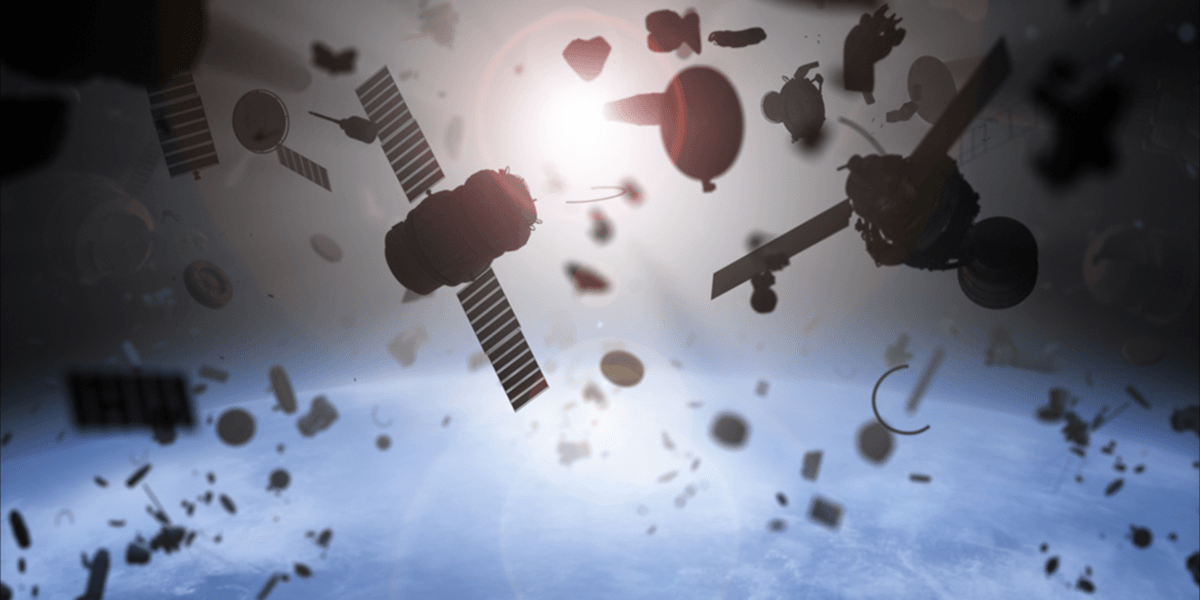Why Do We Need Measures against Space Debris?
Space Debris May also Interfere with Travel to Space
The development of space rockets by private companies and space travel by private citizens is attracting a great deal of attention. Measures against debris floating in space (space debris) have thus become a global issue before the coming age of discovery in space. According to the National Aeronautics and Space Administration (NASA) in the U.S., there are more than 20,000 articles of space debris 10 cm or more in size within an altitude of 50,000 km from the earth.
Typical examples of space debris include fragments of exploded rockets and satellites, failed rockets, artificial satellites that have finished serving their role, upper stages of rockets, and separated and released parts. In fact, a wide variety of space debris is floating around the earth. The number of such articles has doubled over the past 20 years.
The wreckage of China's largest rocket called the Long March 5 reentered the atmosphere and then fell into the Indian Ocean near the Maldives in May of this year. Chinese authorities announced that most of the parts burned up during reentry into the atmosphere. However, this event made the danger of space debris become widely known around the planet.
The danger of space debris is not just that it may fall to earth and cause damage; it has also been pointed out that space debris may collide with global positioning system (GPS) or communication satellites and impair their functions. If the age of space travel becomes a reality in the future and manned rockets are launched one after another, it is predicted that troubles from space debris will occur frequently.

Various Space Debris Removal Measures
There is still no effective technology to remove the essential space debris in situations where removal is urgently required. Universities, major manufacturers, venture companies, startups and others are working on measures to remove space debris with their own technologies and systems.
A research group at a national university is developing a space debris capture robot using a lightweight buffered robot arm with a length of 1.5 m. A single lens camera equipped to a space debris removal satellite will photograph space debris in orbit to estimate the approach and movement of space debris in the eigenspace. This is a mechanism in which the robot arm extended out from the space debris removal satellite will capture space debris after estimating the approach and angular velocity of the debris from the measured approach and movement values in a time series. The group is proposing a method in which the captured space debris will be suspended on a long cord called a conductive tether and be removed from orbit while decelerating as it burns up when entering the atmosphere.
A startup in the U.S. has had success with a demonstration experiment on space debris removal technology with a tether. A startup in Switzerland is working to demonstrate space debris capture technology using an arm. Research is also underway to remove space debris from orbit by irradiating it with a special laser. The pace of development on technology to reliably capture and remove space debris is accelerating worldwide to avoid a further increase in space debris by failing to capture it.
Measures against Space Debris Are an Urgent Issue to Achieve Space Travel
The research company Northern Sky Research in the U.S. estimates that the global space travel market will be 7.9 billion dollars (about 880 billion yen) in total from 2020 to 2030. It predicts that 60% of that will be from orbital flights in which spacecraft fly in orbit around the earth while the other 40% will be from sub-orbital flights to experience weightlessness in which spacecraft return to the earth's surface without orbiting the earth after ascending to an altitude of about 100 km. International rules for safety management in space have yet to be established. Nevertheless, measures against space debris are steadily progressing based on technological and system development.
Incidentally, it is said that weightlessness experiences cost around 200,000 to 300,000 dollars (about 22 million to 33 million yen) per person while the contract price for a seat to travel to space is 28 million dollars (about 3.1 billion yen). This is not a trip that everyone will be able to make anytime soon. However, measures against space debris are an urgent issue to be able to enjoy space travel safely.

